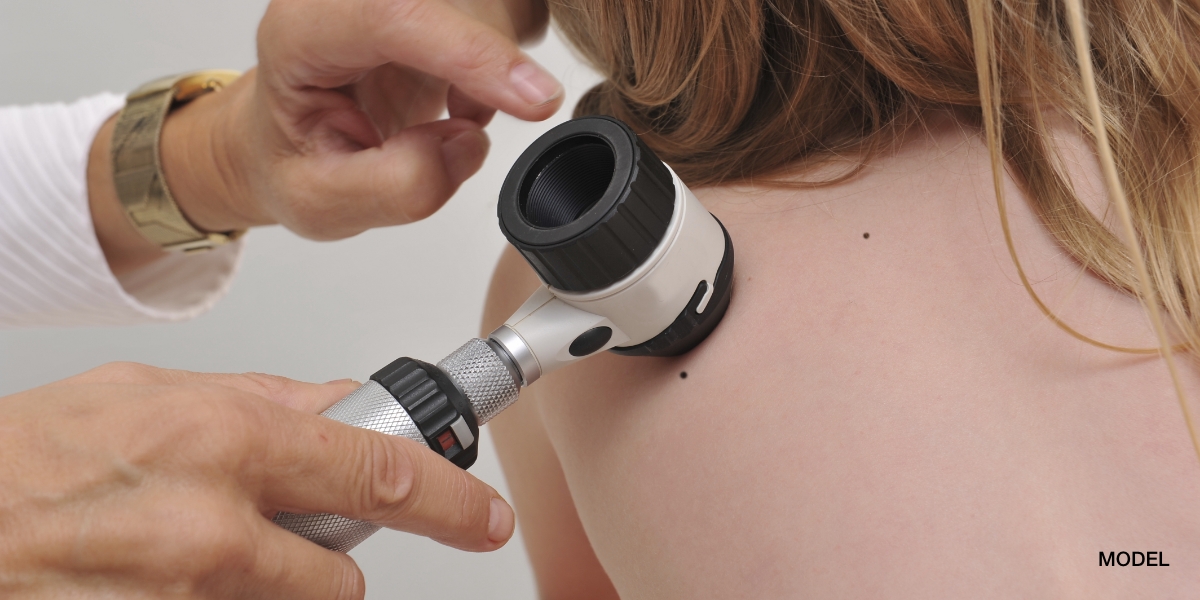Skin cancers can occur in the nail unit so it is necessary to biopsy the nail matrix or nail bed depending on the clinical situation. The majority of nail unit biopsies involve a biopsy of the nail matrix. This is one of the most technically difficult biopsies in the integumentary system. A black vertical line, melanonychia, that spans the proximal to distal nail plate is concerning for a melanoma. Although this could be a benign nevus/mole, only a biopsy can rule out a melanoma. The majority of nevi and melanoma that produce melanonychia reside in the nail matrix. The melanonychia is non-diagnostic pigmentation that would be unrevealing on biopsy. Thus, it is essential to obtain tissue from the origin of the melanonychia in the nail matrix. I prefer to perform a nerve block of the distal finger by placing .5cc of lideocaine 1% without epinephrine into the medial and lateral aspects of the finger. The nail plate must be removed to expose the nail matrix. A nail elevator is used to detach the nail plate from the nail bed. The nail elevator appears like a modified shoe horn and the detachment is completely painless. Once the nail plate is removed, a small portion of the cuticle is reflected off the nail matrix by making two small incisions in the cuticle. This exposes the biopsy site which is removed as a small ellipse followed by one or two sutures. The cuticle is sutured in place and a bandage is placed on the finger. Over 2-3 months a new nail plate will appear. It is critical that the patient understand the nail plate may not grow back or be permanently distorted as the biopsy of the matrix can cause permanent damage to the nail. Occasionally, the nail bed must be biopsied as squamous cell cancers can arise in this area. This biopsy is performed similar to a nail matrix biopsy but without having to reflect the cuticle.
August 8, 2010

Medically reviewed by Anthony J. Perri, M.D.
You May Also Like



Request a Consultation (Sidebar)
Recent Posts
Categories
- Uncategorized (512)
Tags
acne (6)
acne treatment (3)
acne vulgaris (2)
basal cell carcinoma (2)
biopsy (3)
cold urticaria (1)
common skin conditions (11)
dermatologist (15)
dermatology (7)
dr. perri (8)
dry skin (1)
eczema (2)
filiform (1)
health (3)
Herpes (1)
herpessimplex (1)
hives (2)
indentification (1)
keratosis pilaris (1)
Lichen Planopilaris (1)
melanoma (2)
moles (3)
periungual (1)
perri dermatology (10)
prevention (2)
rashes (2)
rosacea (3)
rosacea therapy (2)
skin cancer (6)
skin cancer screening (5)
skin care (2)
skin checks (8)
skin condition (6)
skin conditions (8)
skin damage (2)
skin exam (8)
summertime (3)
sunburn (3)
sunburns (2)
Sunprotection (1)
sunscreen (2)
virus (1)
warts (2)
why perri dermatology (3)
woodlands dermatologist (6)
